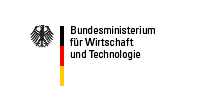INNORISK - Innovative Risk Management for Medical Devices
Research Centers
- Fraunhofer-Institute for Production Technology (IPT) Aachen
- Chair of Medical Engineering (mediTEC)
Methods
Funding


The INNORISK project was funded by the German Federal Ministery of Economic Affairs and Technology.
(Project term: 2006-2008)
Funding and controlling agency was the Forschungsgemeinschaft Qualität e.V. (FQS)
Overview
In the framework of the AiF/FQS-project INNORISK, funded by the Federal Ministry of Economy and Technology (BMWi), a twofold strategy is used:
- The first strategy is to model the cause-and-effect chains of safety-critical, technological and Man-Machine systems, in order to detect and avoid complex failures with non-linear dependencies
- The second strategy approaches the potential human errors in risk-sensitive Man-Machine interfaces using new methodologies for reliability and usability with relation to the clinical environment. These methodologies are than evaluated and quantified after the fact
Under management of the leading research establishments, the Chair of Medical Engineering at the Helmholtz-Institut for Biomedical Engineering at the University of RWTH Aachen (mediTEC/HIA) and the Fraunhofer Institut for Production Technology (IPT), a total of 12 industrial and academic project partners bring in their long-time expertise and knowledge to the field of risk management and usability engineering.
Manufacturers of medical products, especially small and medium-sized enterprises (SME) have to reach an adequate level of risk management in order to fulfil normative requirements (Figure 1). In medical technologies, manufacturers of medical products are bounded to the DIN EN ISO 14971 norm (applying risk management to medical products). They are in need of systematic and effective methods alongside tools for risk analysis, minimizing not only effort but also allowing the best possible results.
Based on these approaches, early detection shall be used to enforce the appropriate risk-minimzing measures. Achieving an accurate and comprehensive risk analysis is analagous to long development cycles and costs. Therefore most SMEs apply as little risk management as normative requirements allow.
Application areas of medical technology are therefore an appropriate field for development and experimentation in risk analysis and usability assessment. The industry is affected by large amounts of small enterprises bringing highly innovative technologies to the market. Undetected risks in advanced developmental stages can only be corrected with large expenses and delays.
Objectives
The objective of INNORISK is to provide a progressive risk analysis method which can be applied to products out of various risk-sensitive areas. In the course of these analyses, especially those pertaining to complex technical errors which are yet to have been sufficiently condsidered, a better integration of Man-Machine-Interface evaluation in risk management process is to be conducted.
Figure 1: Risk Management Process (after 14971)
Publications
- Janß, A., Lauer, W., Chuembou Pekam, F., Radermacher, K. (2011): Using New Model-Based Techniques for the User Interface Design of Medical Devices and Systems. In Roecker, C., Ziefle, M. (eds.): Human Centered Design of E-Health Technologies: Concepts, Methods and Applications. Hershey, P.A.; IGI Global, pp. 234-251
- W. Lauer, A. Janß, B. Ibach & K. Radermacher: Man-Machine-Interaction in Complex Intraoperative Orthopedic Work Systems. In: V.G. Duffy (ed.): Advances in Human Factors and Ergonomics in Healthcare, 2010, pp. 825-833
- A. Janß, W. Lauer, F. Beger & K. Radermacher: Teure Fehlentwicklungen vermeiden. In: Medizin und Technik. Medizin & Technik – Ingenieurwissen für die Medizintechnik, 2010, 02, pp. 40-41
- A. Janß, W. Lauer, F. Beger & K. Radermacher: Sichere Medizinprodukte durch neuartige Risikomethodik. meditronic-journal, 2010, 04, pp. 41-42
- A. Janß, W. Lauer, F. Chuembou & K. Radermacher: A New Model-based Approach for the User Interface Design of Medical Devices and Systems. In: V.G. Duffy (ed.): Advances in Human Factors and Ergonomics in Healthcare, 2010, pp. 499-508
- A. Janß, W. Lauer & K. Radermacher: Bewertung sicherheitskritischer Systeme im OP. In: J. Ziegler, B. Preim & W. Korb (ed.): Zeitschrift für interaktive und kooperative Medien (i-com), Themenschwerpunkt: Mensch-Computer-Interaktion im Operationssaal, 8, 2009, pp. 32-37
- A. Janß, W. Lauer & K. Radermacher: Development and Evaluation of a Formal-Analytical Usability Analysing Tool for Medical Devices and Systems. In: O. Dössel & W.C. Schlegel (ed.): IFMBE Proceedings of 11th International World Congress on Medical Physics and Biomedical Engineering, 25/V, 2009, pp. 180-183
- A. Janß, W. Lauer & K. Radermacher: Development and Evaluation of a Model-based Usability Assessment Tool for Interactive CAS-Systems. Proceedings of the 17th World Congress on Ergonomics of the International Ergonomics Association, CD-ROM, 2009
- A. Janß, W. Lauer & K. Radermacher: Entwicklung und Evaluierung eines formal-analytischen Werkzeugs zur prospektiven Bewertung der Mensch-Maschine-Interaktion in computerunterstützten chirurgischen Arbeitssystemen. Proceedings DESIGN & ELEKTRONIK Entwicklerforum Embedded goes Medical, 2009
- R. Schmitt, K. Radermacher, J. Rauchenberger, J. Kukolja, W. Lauer & A. Janß: Gefahr im Verzug? Konzept für Risikomanagement selbst komplexer Produkte. QZ Qualität und Zuverlässigkeit, 54(12), 2009, pp. 56-57
- Schmitt, R., Rauchenberger, J., Radermacher, K., Lauer, W. & Janß, A.: Neue Wege für das Risikomanagement bei der Entwicklung risikosensitiver Produkte., 88-04, FQS-DGQ Schriftenreihe, FQS Forschungsgemeinschaft Qualität e.V., 2009, S. 112


